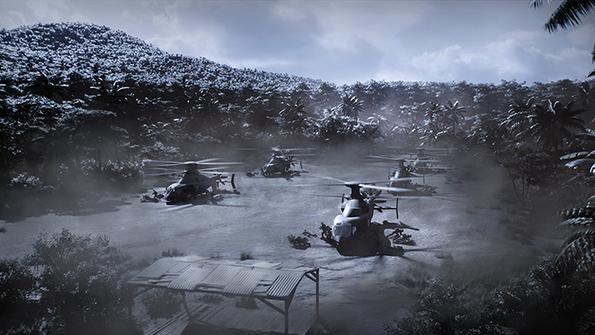
Sikorsky says its Defiant X proposal was not properly evaluated by the Army before the December award to Bell.
The U.S. Army’s push to speed up its long-awaited next-generation rotorcraft faces an uncertain future as Sikorsky, which lost out on the Future Long-Range Assault Aircraft award in December, is protesting a decision it says was not in the best interest of the service and taxpayers.
The Army in early December announced Bell had won the Future Long-Range Assault Aircraft (FLRAA) contest, initially awarding about $232 million for a digital prototype to kick off a program that could be worth up to $70 billion. The industry-defining contract sets up Bell’s tiltrotor V-280 to replace Sikorsky’s venerable UH-60 Black Hawk helicopters and define the service’s rotorcraft fleet for the long term, not to mention potential foreign military sales.
“The data and discussions lead us to believe the proposals were not consistently evaluated to deliver the best value in the interest of the Army, our soldiers and American taxpayers," the Lockheed Martin subsidiary states. “The critical importance of the FLRAA mission to the Army and our nation requires the most capable, affordable and lowest-risk solution. We remain confident Defiant X is the transformational aircraft the Army requires to accomplish its complex missions today and well into the future.”
- Bell set to develop FLRAA digital prototype in 19 months
- GAO has until April 7 to reach a decision on the protest
In announcing the contract, Army officials were short on details about why they selected the tiltrotor over Sikorsky-Boeing’s Defiant X dual-coaxial-rotor offering, but the service said the decision was made in a disciplined fashion. The award was first expected in 2019 but was repeatedly pushed back. It was delayed further last year as the service worked to ensure the process was done the right way.
“Every source selection is a deliberate process,” says Joseph Giunta, executive director of Army Contracting Command. “I don’t really call it a delay. It was a very complex procurement, and so we did our due diligence, and we produced what I think is a best-value source selection decision at the end of that process.”
The Government Accountability Office has until April 7 to reach a decision on the protest. The process slows down the schedule the Army laid out in the award, which was a timeline of about 19 months for Bell to develop a digital prototype under the middle tier of acquisition authority ahead of a potential Milestone B decision. If Bell can stick to the schedule, the service wants delivery of six FLRAA prototypes in 2025 and the first unit equipped in 2030. The latter date, based on a 2019 decision, is an acceleration of four years compared to a previous plan.
If the protest is supported and the program potentially recompeted, it would cause a significant delay in fielding an aircraft that the Army says is one of its top modernization priorities.
The Dec. 7 award kicked off a process leading to a potential $7.1 billion engineering and manufacturing development contract and potential production options to include the first batch of low-rate initial production aircraft, Army officials say. This process is “event-based,” and Giunta says the Army anticipated a potential protest in its timeline.
“We did take a challenge on the schedule to try, and we were obviously going to do it in a disciplined and deliberate fashion, but we wanted to do it as fast as we could for all the reasons that we need this capability in the field,” says Maj. Gen. Robert Barrie, the Army’s program executive officer for aviation. “So we are confident that the process we went through was disciplined and deliberate, and it counted for the complexity of the decision that was involved.”
The FLRAA program was kicked off in 2014 as the Army selected the V-280 and SB-1 Defiant demonstrators for the Joint Multi-Role Technology Demonstration (JMR-TD) program.
Bell says in a statement that its V-280 meets Army requirements based on the design and testing that began with the JMR-TD program, with the aircraft “systematically validated” with its open-system approach in collaboration with the Army.
“We are honored that the U.S. Army has selected the Bell V-280 Valor as its next-generation assault aircraft,” said Scott C. Donnelly, chairman and CEO of Bell’s parent company, Textron. “We intend to honor that trust by building a truly remarkable and transformational weapon system to meet the Army’s mission requirements. We are excited to play an important role in the future of Army Aviation.”






Comments